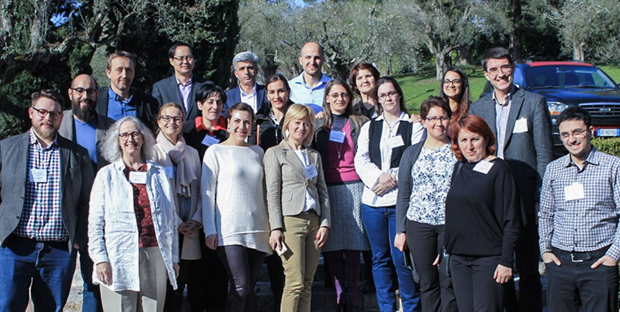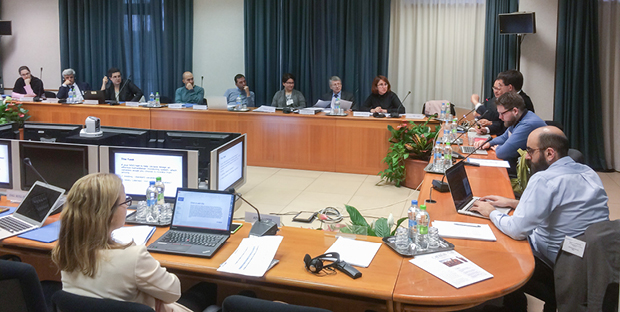Conflict and violence are critical development challenges, and often a direct cause of forced displacement. Understanding the dynamics of conflicts and providing government and partners with useful information to better handle the challenges caused by conflicts are crucial. Standard approaches, however, often fail to adequately capture the consequences of a crisis for individuals, mainly due to the scarcity and/or lack of micro-level data, which forces researchers to mainly rely on standardised macro-level information. Lack of information on households also limits the ability of governments and partners to target vulnerable groups.
The World Bank’s Conflict Exposure Module (CEM) aims to fill this gap. It was presented during the “Measuring violent conflict in micro-level surveys” training in Perugia, Italy, to participants from national statistical offices, researchers and international organisations.
Our colleague Dag Roll-Hansen, together with Aina Saetre from UNHCR, contributed a session on building sound national statistics, based on the work of the Expert Group on Refugee and IDP Statistics (EGRIS) as well as JIPS’ broader expertise.

The group of experts and facilitators from NSOs, the World Bank, UNHCR and JIPS that took part in the Bank’s training.
As the Bank reminds in the course syllabus, “standard household surveys used in crisis-affected countries only sporadically feature questions capturing the causes and consequences of the crisis, failing to account for the varied and long-lasting impact of crises on respondents.”
The training “Measuring violent conflict in micro-level surveys”, centred on the Conflict Exposure Module, was developed in response to the needs of national statistical offices (NSOs) for information on how conflict is affecting the well-being of households in their own countries, as well as neighbouring ones. It represented a great opportunity for a deeper discussion on how to improve official statistics to better reflect the effects of crises exposure and inform policy-making.
Participants represented multiple NSOs from Eastern Europe and Central Asia, including Azerbaijan, Bosnia & Herzegovina, Georgia, Kosovo, Serbia, Turkey and Ukraine.
The Conflict Exposure Module (CEM) is a generic household survey module that captures the multifaceted individual- and household-level effects and consequences of violent conflict. The module is designed to be used in combination with other survey tools such as the Bank’s Living Standard Measurement Study (LSMS), UNICEF’s Multiple Indicator Cluster Survey or national household surveys.
Interestingly, the Bank’s CEM presents important similarities to tools for analysing forced displacement situations. In fact, we often face similar data collection challenges, aim to reach similar populations and respondents, and ask similar questions. This overlap can be explained by the fact that conflict often leads to displacement, and that the tool relies on a wide definition of “conflict”. In addition, similar to the approach recommended by the EGRIS, the CEM also highlights the key role of NSOs and other producers of statistics within government bodies in data collection processes.
However, while the Module provides useful content for monitoring changes in people’s situation,it falls somewhat short when it comes to understanding how people progress towards finding durable solutions to their displacement situation. This is an aspect that profiling of displacement situations specifically puts more emphasis on, and where the Conflict Exposure Module might benefit from expanding its focus on direct and indirect consequences of conflict, to also address future solutions to current challenges. Nevertheless, the CEM proves to be a valuable resource for our current work on developing questionnaire modules as part of the Durable Solution Indicators Library and Analysis Guide for comprehensive durable solutions analyses.

Having representative samples is fundamental in order to collect better evidence. However, achieving this in conflict settings and IDP situations is often challenging. During the World Bank training, some ways to address this problem were discussed:
During a conflict, parts of the country’s territory might not be under government control and thus hard to access, even in protracted situations. Conducting phone surveys was suggested to overcome the challenge of involving respondents living on the other side of a frontline.
Interviewing the same sample of respondents a number of times over a defined period can be a powerful way to reflect and analyse change, as it allows to compare variations at the individual level, as opposed to comparing averages between groups. In areas with high availability of mobile phones, follow-up interviews can also be done over the phone. Still, this approach also comes with challenges related to recruitment and panel maintenance, such as reaching the same respondents over time, replacing those that are no longer available, etc.
Crowdsourcing is a widespread practice whereby everyone can report on events in conflict areas. However, this approach comes with limitations, such as not knowing who your respondents are or not being able to assess if your sample is representative. The approach known as crowdseeding can help overcome these problems. Reflecting the planting of seeds that continue to grow and provide information over time, measures can be taken to select and maintain a sample that can provide representative information.
The World Bank’s training was a great opportunity for JIPS, together with government officials from various NSOs as well as trainers, to share experiences and learn best practices on survey-related issues. The Bank will hold similar trainings for the Middle East and North Africa (September 2018) and Sub-Saharan Africa (November 2018) and we are looking forward to continued collaboration on these (please contact Diane Steele for more information).
At JIPS, we are happy to contribute to our partners’ trainings as a way to share profiling knowledge to a wider audience, and have done so in many occasions in the past (see e.g. ICRC’s Protection of Civilian Population course 2017, or UNHCR’s interagency workshop on targeting refugees). We are happy to discuss this work with partners, so feel free to contact us should you be interested! Also check out our Profiling Crash Course, our toolkit the JET and our Profiling Coordination Training, which can help you propel your profiling process.